
Just last summer, many of us watched our vibrant green lawns turn a sad shade of beige under the relentless sun. The familiar hiss of the sprinkler became a memory as hosepipe bans swept across the UK, leaving our gardens parched and our prize-winning petunias wilting. It’s a frustrating cycle: we pour our hearts (and countless litres of water) into our gardens, only for unpredictable weather to throw our best-laid plans into disarray. What if there was a smarter way to garden—a way to create a stunning, vibrant sanctuary that could withstand the driest of spells without constant watering?
This is where the concept of water-wise gardening, also known as xeriscaping, comes into its own. It's a sustainable and intelligent approach that allows you to cultivate a beautiful garden that not only survives but thrives with minimal water. This isn't about sacrificing lush foliage and colourful blooms for a barren rockery. Instead, it’s about working in harmony with nature to build a resilient, beautiful, and eco-friendly outdoor space. For UK gardeners, this method is more relevant than ever, offering a path to saving water, money, and precious time.
This guide will walk you through everything you need to know to transform your garden into a flourishing, low-water oasis. We’ll explore how to plan your space, select stunning drought-tolerant plants that are perfect for our climate, master clever irrigation techniques, and maintain your garden for long-term success.
What is Water-Wise Gardening and Why Does it Matter?
At its core, water-wise gardening is simply an approach that seeks to minimise water use and maximise its efficiency. It’s a collection of practical principles and techniques designed to create healthy, attractive gardens that are less dependent on supplemental watering. By making smart choices, you can create a garden that is both beautiful and environmentally responsible.
The benefits extend far beyond just conserving water. Adopting a water-wise approach brings tangible rewards:
- Lower Water Bills: This is the most immediate financial perk. With the average UK household using up to 50% of its water on the garden during summer, efficient practices can lead to significant savings.
- Positive Environmental Impact: Water is a finite resource. Conserving it, especially during the increasingly frequent UK droughts, helps protect local ecosystems and ensures there's enough to go around for everyone.
- Less Maintenance, More Enjoyment: Imagine spending your summer evenings relaxing in your garden instead of dragging a hosepipe around. A water-wise garden frees up your time, allowing you to enjoy your beautiful space rather than constantly tending to it.
- A More Resilient Garden: By encouraging deep root systems and choosing plants adapted to drier conditions, your garden will be far better equipped to handle heatwaves and dry spells, bouncing back more quickly when the rain finally returns.
According to the Royal Horticultural Society (RHS), a garden sprinkler can use as much as 1,000 litres of water in a single hour—equivalent to more than 12 baths. This single statistic highlights just how much water our gardens consume and underscores the powerful impact that mindful gardening can have.
Step 1: Plan Your Perfect Water-Wise Plot
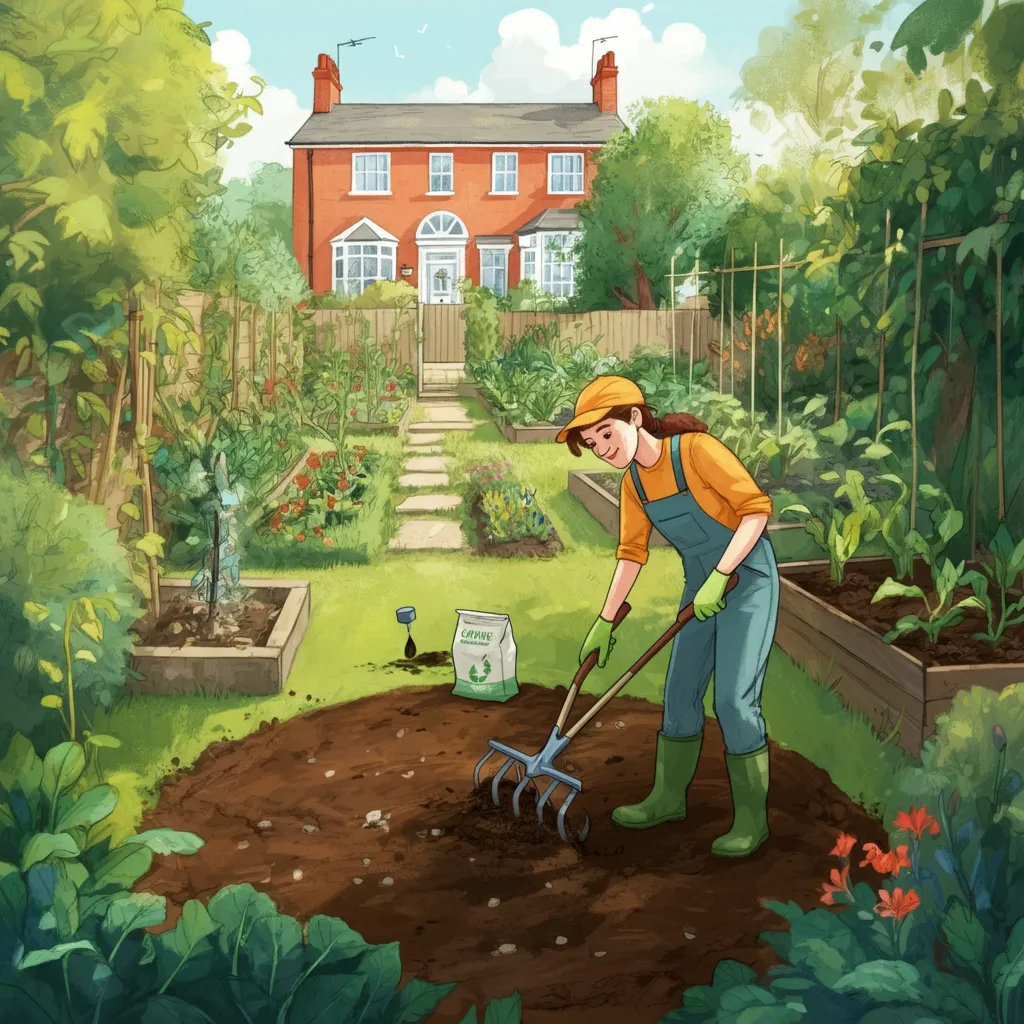
A thriving water-wise garden begins long before you plant a single seed. It starts with careful observation and smart planning. Taking the time to understand your garden's unique environment is the most critical step toward success.
Assess Your Microclimate
Every garden has its own microclimates—small areas where conditions like light, soil, and exposure differ from the garden as a whole.
- Sun Exposure: Spend a day charting the sun's path across your garden. Note which areas get blistering afternoon sun and which remain in cool shade. This "sun map" will be invaluable when deciding where to place plants.
- Soil Type: Understanding your soil is fundamental to managing water effectively. You can perform a simple "jar test" to identify its composition. Fill a large jar about two-thirds full of water, add a scoop of soil, shake it vigorously, and let it settle for a few hours. Sandy soils, with large particles, will settle quickly at the bottom and drain rapidly. Clay soils, made of fine particles, will settle into a dense layer and hold water for longer. Loam is the ideal, with a balanced mix. No matter your soil type, you can improve its water retention and structure by adding organic matter like well-rotted compost or manure.
- Wind and Slope: Consider how wind affects your garden, as it can significantly increase water evaporation from leaves and soil. Similarly, if your garden is on a slope, water will run off faster. You might consider terracing sloped areas to slow down water flow and allow it to soak into the soil.
Group Plants by Need (Hydrozoning)
One of the most effective water-wise strategies is hydrozoning. This simply means grouping plants with similar water needs together. By creating distinct zones for high-water, moderate-water, and low-water plants, you can water far more efficiently. For instance, you can place thirsty plants like hydrangeas and ferns together in a shadier, naturally damper part of the garden, while placing your sun-loving, drought-tolerant plants in the driest spots. This avoids the common mistake of overwatering drought-resistant plants or underwatering those that need more moisture.
Read More | The Waterwise Garden BlueprintStep 2: Choose Your Champions: Selecting Drought-Tolerant Plants

This is where the fun begins! Choosing the right plants is the cornerstone of a beautiful and resilient water-wise garden. The term "drought-tolerant" might conjure images of cacti and succulents, but the reality is a world of vibrant colours, textures, and forms perfectly suited to the UK climate.
So, what makes a plant drought-tolerant? These clever plants have evolved specific features to help them conserve water. Look for plants with:
- Silver or Grey Foliage: The light colour reflects the sun's rays, keeping the plant cooler (e.g., Lavender, Lamb's Ear).
- Small, Hairy, or Waxy Leaves: These adaptations reduce moisture loss through evaporation (e.g., Rosemary, Cistus).
- Deep Taproots: These roots reach far down into the soil to find moisture long after the surface has dried out (e.g., Eryngium).
Here is a list of beautiful and reliable drought-tolerant plants that will thrive in UK gardens:
Stunning Perennials
- Lavender (Lavandula): The quintessential water-wise plant, beloved for its fragrant purple flowers and silvery foliage.
- Verbena bonariensis: Its tall, wiry stems topped with clusters of purple flowers create an airy, see-through effect and attract pollinators.
- Sedum (Stonecrop): With succulent leaves and showy flower heads in late summer, Sedums are incredibly tough and provide valuable late-season colour.
- Eryngium (Sea Holly): Its striking, thistle-like blue flowers and spiky foliage add architectural drama to any border.
Hardy Shrubs
- Rosemary (Rosmarinus officinalis): An evergreen herb that offers aromatic foliage and delicate blue flowers. It loves a sunny, well-drained spot.
- Cistus (Rock Rose): These Mediterranean shrubs are covered in beautiful, paper-like flowers in early summer and have adapted leaves to reduce water loss.
- Ceanothus (Californian Lilac): Known for its spectacular display of blue flowers in spring or summer, this shrub is a real showstopper.
Architectural Grasses
- Stipa tenuissima ('Ponytails'): A graceful grass with fine, hair-like foliage that catches the slightest breeze, adding movement and light to the garden.
- Festuca glauca ('Blue Fescue'): Forms neat clumps of intense silver-blue, needle-like foliage, providing year-round colour and texture.
Wonderful Ground Cover
- Thyme (Thymus): A fragrant, low-growing herb that creates a carpet of foliage and flowers, perfect for covering sunny banks or path edges.
- Stachys byzantina (Lamb's Ear): Grown for its incredibly soft, woolly, silver leaves that are irresistible to touch.
A great tip is to visit local garden centres and public gardens to see which drought-tolerant plants are thriving in your area. This gives you a real-world preview of what will work well in your own garden.
Read More | Drought Tollerant PlantsStep 3: Smart Watering with Efficient Garden Irrigation
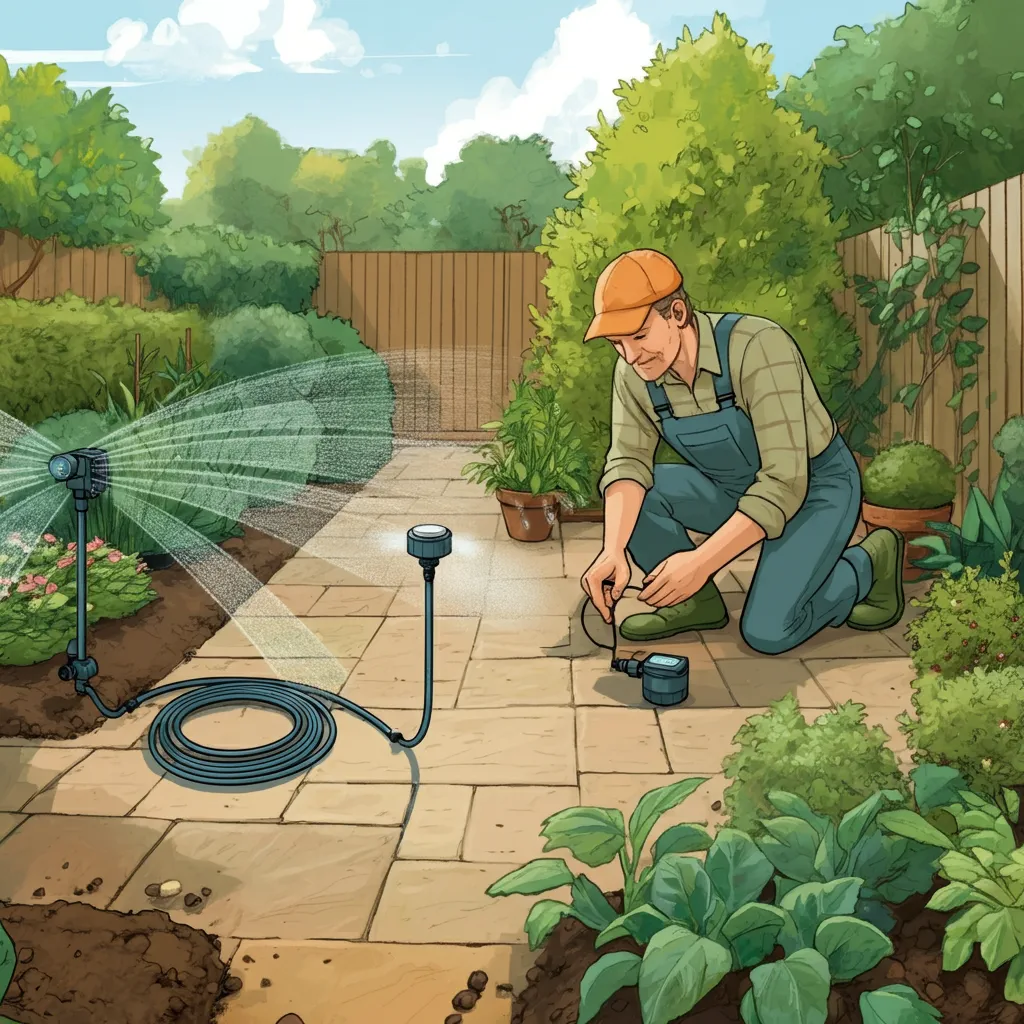
Water-wise gardening changes the focus from how much you water to how you water. The goal is to deliver water efficiently and encourage plants to become self-sufficient.
- Water Deeply and Infrequently: Instead of a light sprinkle every day, give your plants a thorough soaking once or twice a week. This encourages their roots to grow deep into the soil in search of water, making them much more resilient during dry periods.
- Timing is Everything: Water in the cool of the early morning or evening. Watering in the middle of a hot day is incredibly wasteful, as much of the water will evaporate before it even reaches the roots.
Consider upgrading your garden irrigation system for maximum efficiency:
- Drip Irrigation: This is the gold standard. A network of pipes with small emitters delivers water slowly and directly to the base of each plant. It can reduce water use by up to 70% compared to a sprinkler. While it has an initial setup cost, the long-term water savings are substantial.
- Soaker Hoses: A more affordable alternative, these porous hoses 'weep' water along their entire length, soaking the ground slowly and deeply. They are excellent for vegetable patches and flower beds.
- The Trusty Watering Can: Don't underestimate the precision of a watering can, especially for container plants and newly planted specimens. It ensures water goes exactly where it's needed, with no waste.
Finally, installing a water butt to collect rainwater from your roof is one of the easiest and most effective ways to secure a free, sustainable water source for your garden.
Read More | Our Smart Watering GuideStep 4: The Magic of Mulch
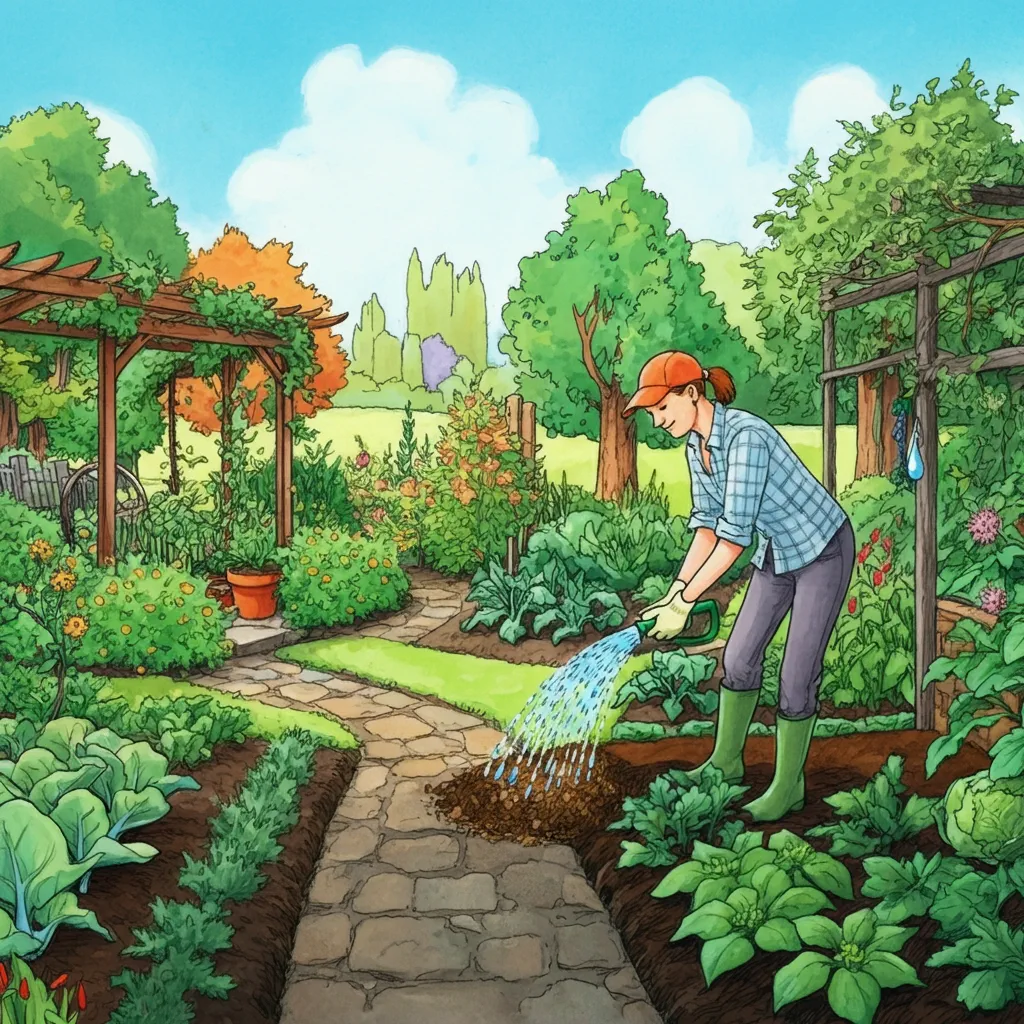
Mulch is a water-wise gardener's best friend. It’s a layer of material applied to the surface of the soil, and its benefits are transformative. Mulch can be organic (like bark chips, compost, or leaf mould) or inorganic (like gravel or slate chippings).
Applying a thick layer (5-7cm) of mulch around your plants provides several key advantages:
- Retains Soil Moisture: It acts like a protective blanket over the soil, dramatically reducing evaporation from the sun and wind.
- Suppresses Weeds: A thick layer of mulch blocks sunlight, preventing weed seeds from germinating. Since weeds compete with your plants for water and nutrients, fewer weeds mean more resources for the plants you love.
- Regulates Soil Temperature: Mulch helps keep the soil cooler in the summer and warmer in the winter, protecting plant roots from extreme temperatures.
To apply mulch, simply spread it over the bare soil around your plants, being careful not to pile it up directly against the stems, which could cause them to rot.
Read More | The Magic of Mulching Your GardenStep 5: Maintaining Your Thriving Water-Wise Garden

Ongoing maintenance for a water-wise garden is generally less intensive, but a few key tasks will ensure it remains healthy and beautiful.
- Weed Diligently: Remove weeds as soon as you see them. They are thieves that steal precious water and nutrients from your plants.
- Prune Smartly: Lightly pruning some plants during very hot weather can help reduce water loss through their leaves.
- Fertilise Sparingly: Don't over-fertilise your garden. Pushing rapid, lush growth increases a plant's demand for water. A slow-release granular fertiliser applied in spring is usually sufficient.
- Learn to Read Your Plants: Get to know the signs of thirst for your different plants. Many will slightly wilt in the afternoon heat but recover by morning. Learn to distinguish this from genuine dehydration, and only water when necessary rather than sticking to a rigid schedule.
Enjoy Your Beautiful, Sustainable Garden
Creating a water-wise garden is an empowering and rewarding journey. It proves that you don't have to choose between a lush, beautiful garden and being environmentally conscious. Through smart planning, careful plant selection, and efficient techniques, you can cultivate a space that is resilient, low-maintenance, and bursting with life.
You don't have to transform your entire garden overnight. Start small. Choose one sunny border or a few containers to experiment with drought-tolerant plants and mulching. As you see the incredible results—and the time, money, and water you save—you’ll be inspired to apply these principles throughout your entire garden.

Create a Lush Oasis: Your Water-Wise Gardening Guide
Just last summer, many of us watched our vibrant green lawns turn a sad shade of beige under the relentless sun. The familiar hiss of the sprinkler became a memory as hosepipe bans swept across the UK, leaving our gardens parched and our prize-winning petunias wilting.

From Thirsty to Thriving: A Water-Wise Garden Blueprint
The familiar sight of a summer hosepipe ban is becoming an annual reality for many UK gardeners. As our climate changes, bringing hotter, drier summers, water scarcity is a growing concern that directly impacts our green spaces.

Drought Tolerant Plants for UK Gardens
Water restrictions, unpredictable rainfall, and soaring water bills have many UK gardeners rethinking their approach to garden design. But here's the exciting part: creating a drought-tolerant garden doesn't mean sacrificing beauty or colour.
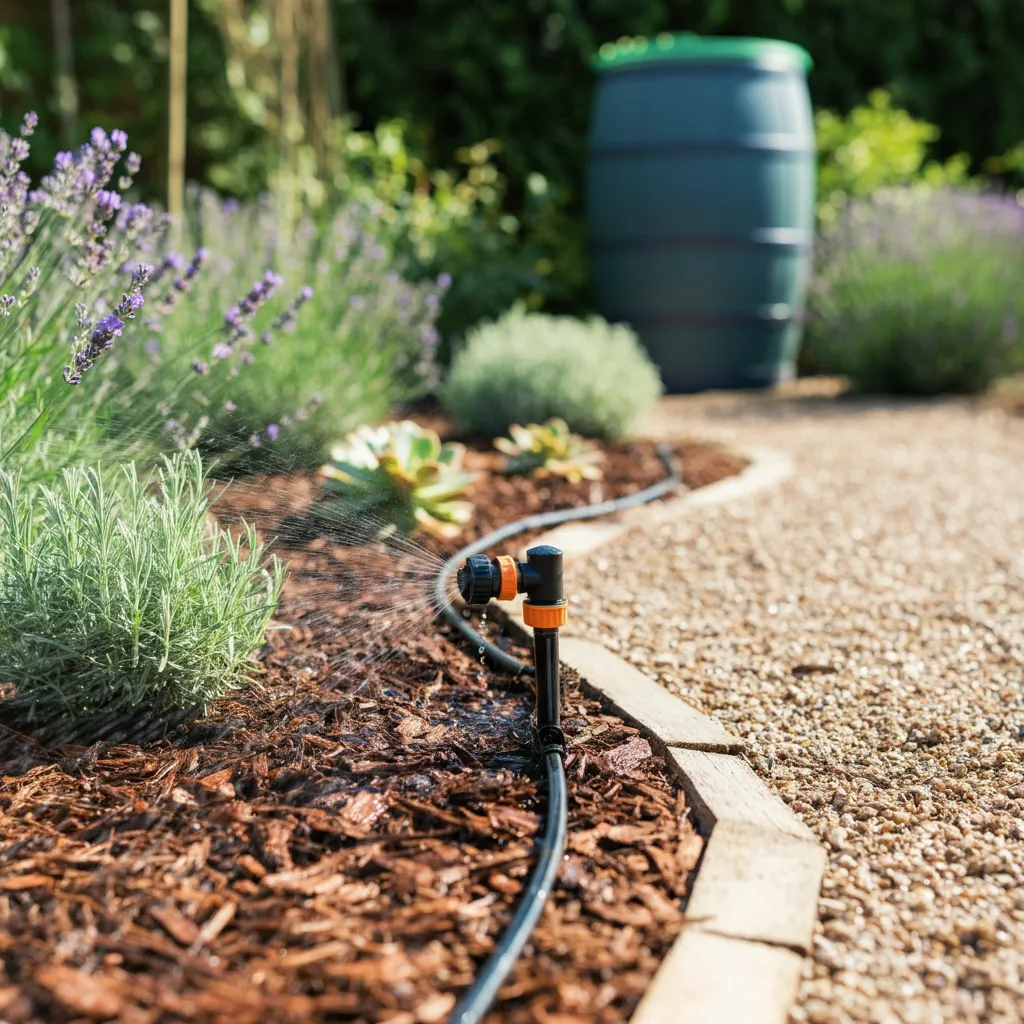
Smart Watering Secrets That Saves you Water and Money
With water bills rising and hosepipe bans becoming increasingly common across the UK, efficient garden irrigation has never been more important. Yet many gardeners unknowingly waste up to 50% of their water through poor watering practices.
The Magic of Mulching Your Garden
The summer sun beats down mercilessly on your prize roses, and the soil looks as parched as a desert floor. Sound familiar? Every UK gardener has faced those unexpectedly scorching days when the weather forecast promises weeks without rain, and you're left wondering how on earth you'll keep your beloved plants alive?

Water-Wise Garden Care Guide
With climate change bringing unpredictable weather patterns and water restrictions becoming increasingly common across the UK, more gardeners are discovering the benefits of drought-resistant gardening. Creating a water-wise garden filled with resilient plants is an excellent first step

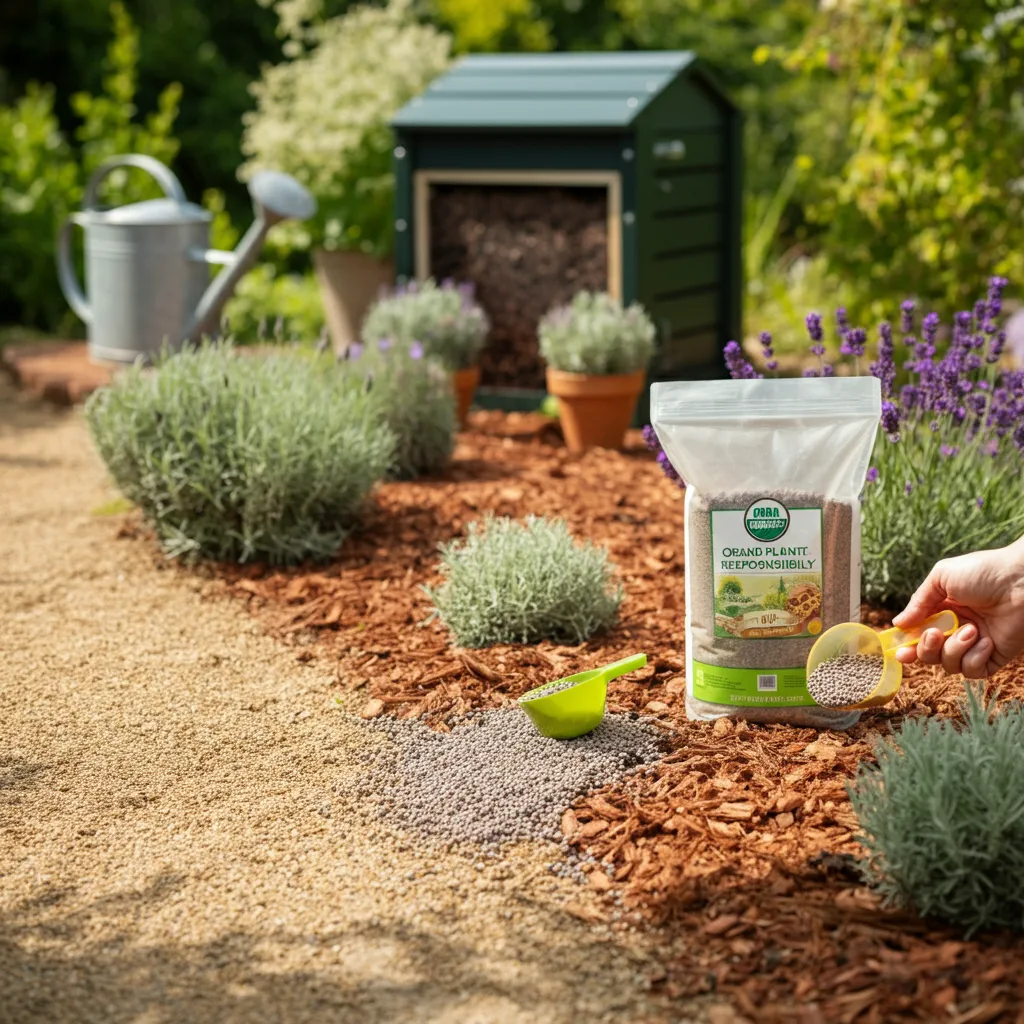

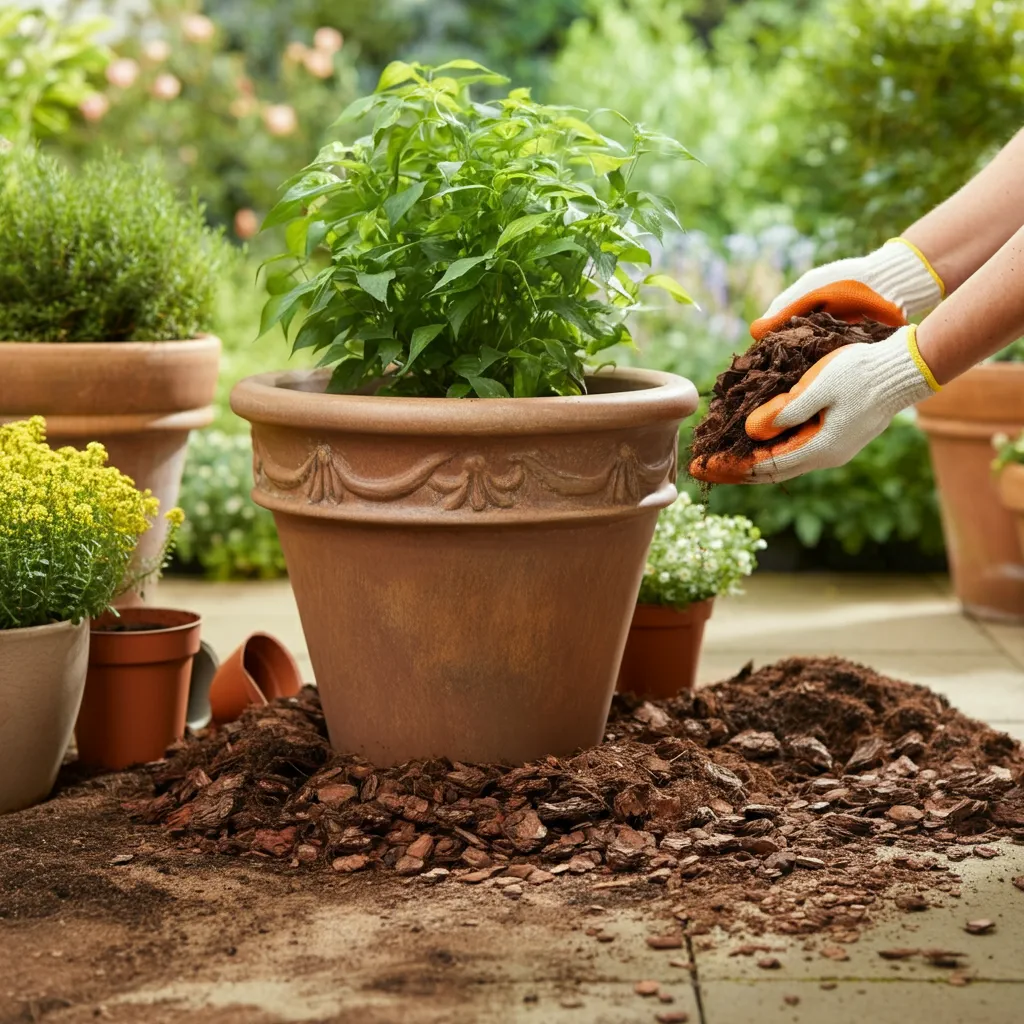


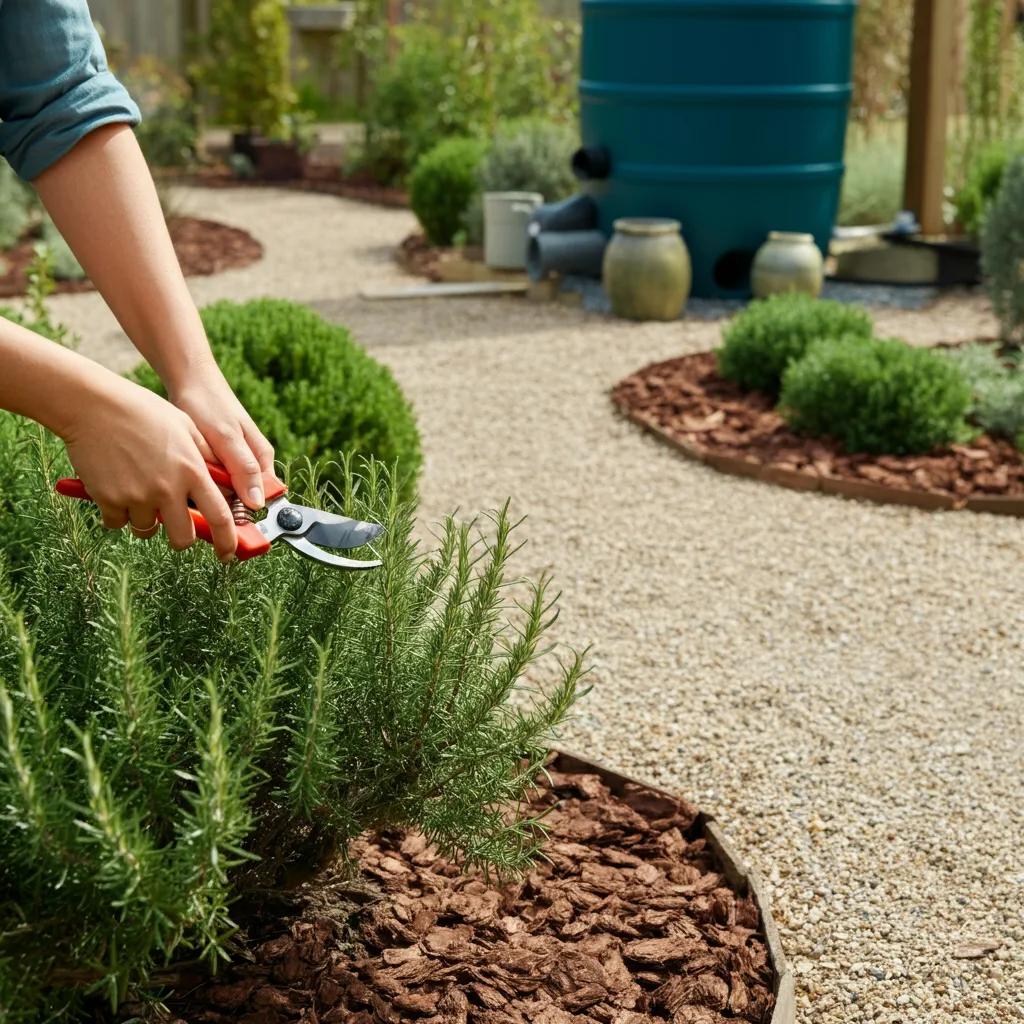

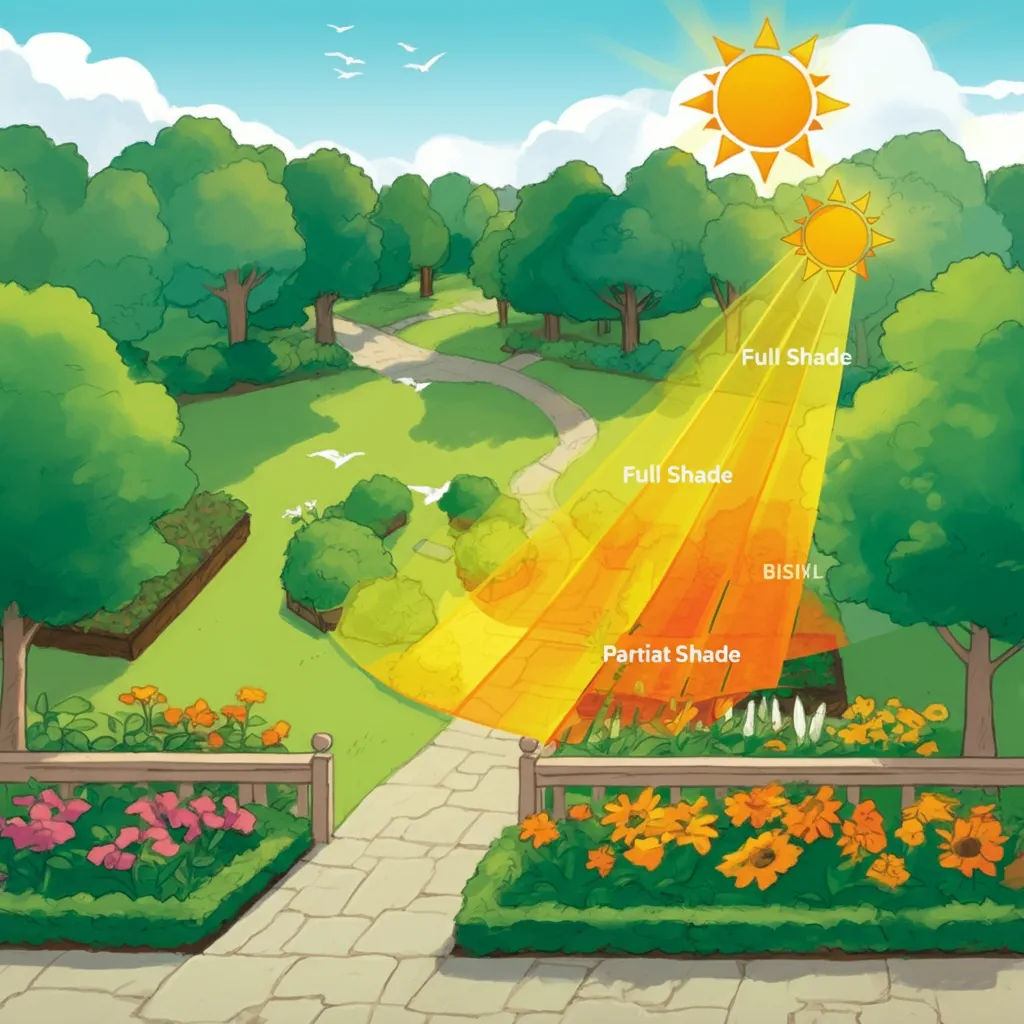

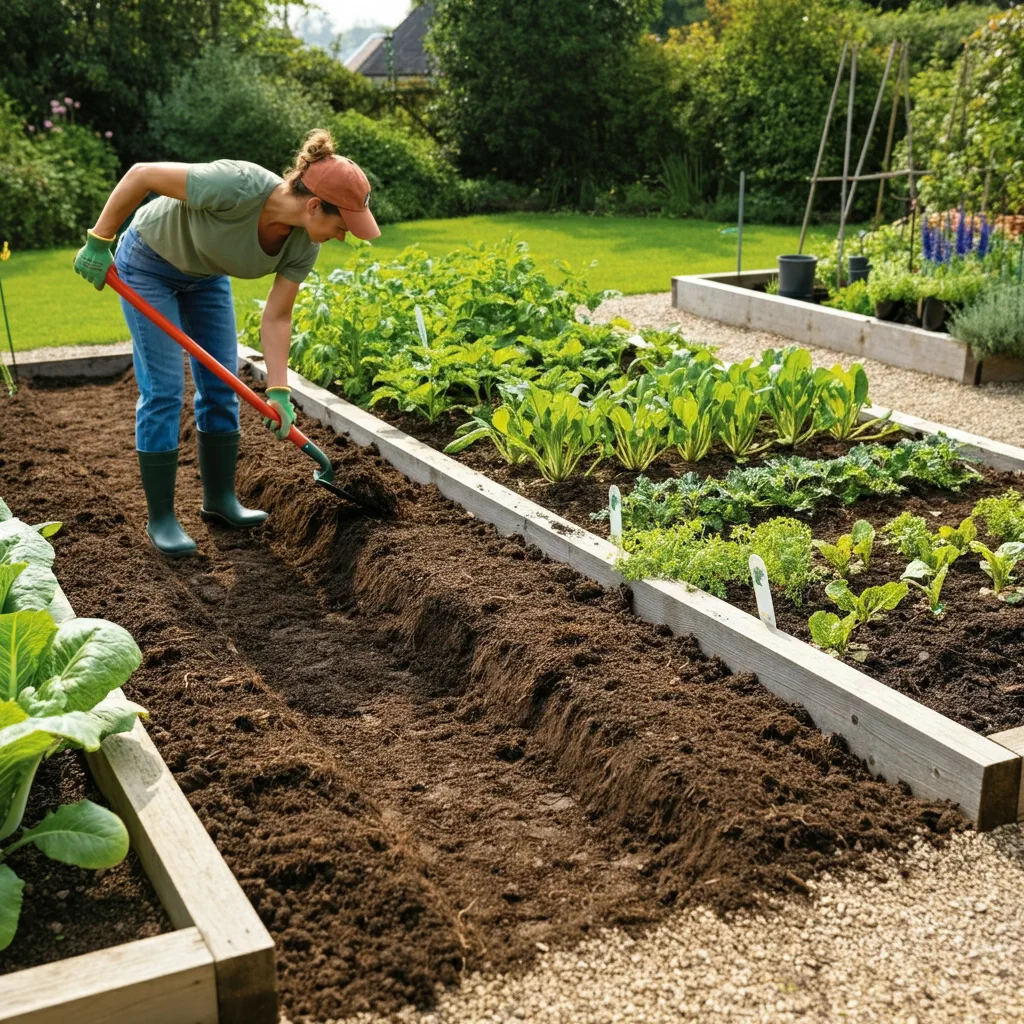







Community Feedback